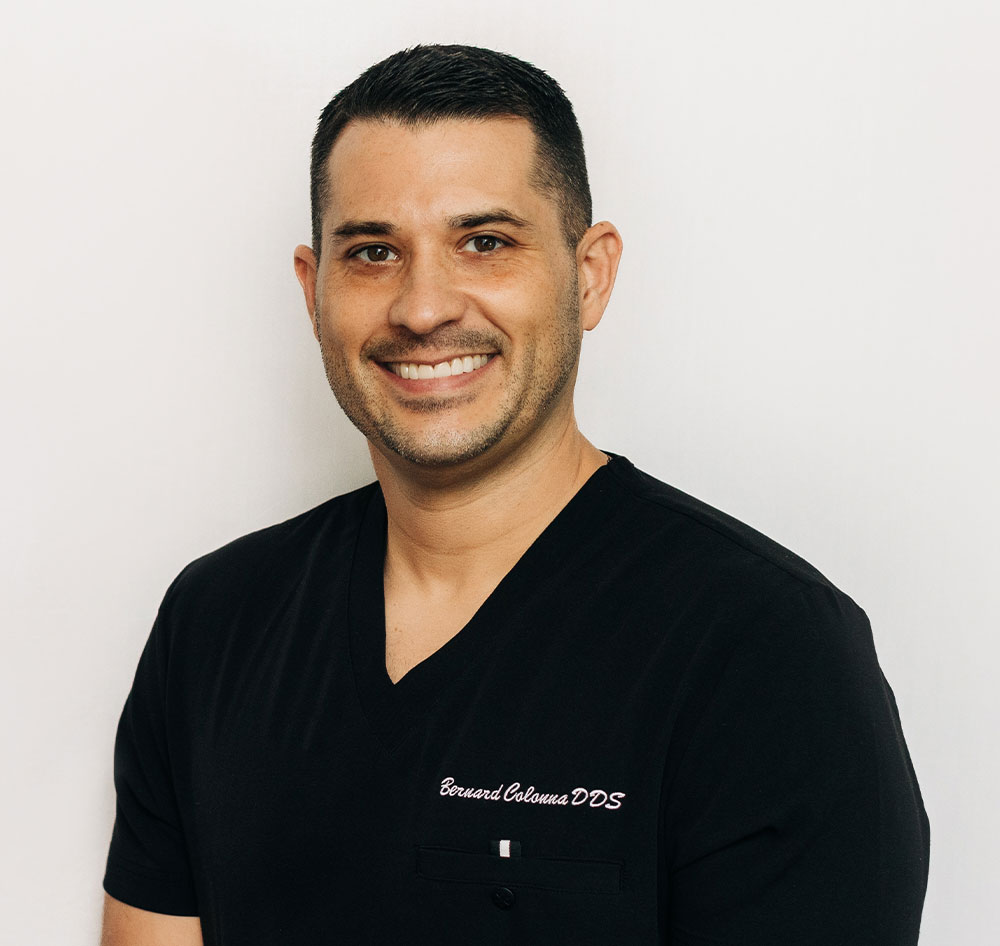Non-Surgical Root Canal
A Guide to Non-Surgical Root Canals

If you’ve ever wondered what a non-surgical root canal entails or if it’s the right solution for your dental issue, the professionals at Amedeo and Colonna, LTD in Park Ridge are here to guide you.
Understanding Non-Surgical Root Canals
Also known as non-surgical endodontic treatment, this procedure aims to treat the infected pulp inside the tooth, preserving the natural teeth. Unlike conventional root canal therapy, which involves surgical intervention, non-surgical root canal therapy is a less invasive option with a high success rate at Amedeo and Colonna, LTD.
What is a Non-Surgical Root Canal?
A root canal is a dental procedure that treats infected tooth pulp. The infected pulp, located in the center of the tooth, contains blood vessels, nerves, and connective tissue. Symptoms of an infected pulp include severe pain, swelling, and oral health issues.
Non-surgical root canal therapy involves removing the infected pulp, disinfecting, shaping, and filling the root canal system. This procedure aims to eliminate the infection and protect the tooth from further damage. It is a common endodontic procedure to save natural teeth from extraction and one that the experts at Amedeo and Colonna, LTD have a lot of success with.
Purpose of Non-Surgical Root Canal
Non-surgical root canal therapy eliminates tooth infection, pain, and swelling caused by infected pulp. It preserves the natural tooth and maintains oral hygiene, preventing tooth loss. This treatment also addresses periapical lesions to prevent further infection and damage.
Symptoms Indicating the Need for a Root Canal
Recognizing symptoms that may indicate the need for a root canal is important. Common signs include severe toothache, swelling, tenderness, or a pimple-like bump on the gums.
These symptoms suggest an infected pulp or periapical lesions. Tooth pain can range from a persistent ache to an intense sensation caused by an inflamed tooth pulp.
Call Amedeo and Colonna, LTD if you experience a severe toothache that doesn’t subside, as a root canal procedure may be necessary to address the infection and alleviate pain.
Swelling and Inflammation
Swelling and inflammation of the gums, particularly around the affected tooth, can indicate the need for a root canal procedure. This swelling, often accompanied by tenderness or redness, is a sign of infection in the periapical tissues. These tissues surround the tooth root and can become inflamed and infected due to pulp infection or periapical lesions. If you notice unexplained, persistent swelling of the face, near the affected tooth, or if you have a pimple-like bump on the gums, it’s important to consult with the professionals at Amedeo and Colonna, LTD in Park Ridge, as these may be signs of infection that require root canal treatment.
Diagnosis of Damaged Pulp
Diagnosing damaged pulp and determining the need for a root canal procedure involves a thorough evaluation by the professionals at Amedeo and Colonna, LTD. This evaluation includes clinical and radiographic examinations, and considers your symptoms and dental history. By assessing the extent of damage, vitality of the pulp, and the presence of a dental abscess, Amedeo and Colonna, LTD can accurately diagnose the pulp-related concerns. One of the diagnostic tests performed is the pulp vitality test, which helps determine the health of the pulp and the need for endodontic treatment.
Clinical Examination
During the clinical examination, Amedeo and Colonna, LTD will assess the tooth for pain, tenderness, discoloration, and its response to stimuli. This examination helps determine the extent of damage to the tooth and the pulp. By evaluating the tooth’s mobility, position, and the presence of a dental abscess, Amedeo and Colonna, LTD can further diagnose pulp-related issues. The clinical examination aids in identifying the need for further endodontic evaluation and treatment, and is an essential step in determining the most appropriate treatment approach.
Radiographic Examination
In addition to the clinical examination, a radiographic examination is often performed to obtain detailed views of the tooth and the surrounding structures. This examination, which may include periapical and panoramic X-rays, helps visualize the extent of dental infection, periapical lesions, and pulp damage. By assessing the periapical tissues, bone density, and tooth anatomy, Amedeo and Colonna, LTD can explore the pulp pathology and plan the most suitable treatment approach. Advanced imaging technology, such as cone-beam computed tomography, provides precise insights into root canal issues, particularly in cases involving large periapical lesions or a history of trauma.
The Non-Surgical Root Canal Procedure
Once Amedeo and Colonna, LTD establish that a non-surgical root canal is possible, the procedure can begin. It is important to note that non-surgical root canal therapy has a high success rate, making it the preferred option for most cases. Unlike surgical root canal treatment, the non-surgical approach is less invasive, promoting natural tooth preservation, and restoring oral function. Let’s now explore the steps involved in the non-surgical root canal procedure.
Preparation for the Procedure
Before the non-surgical root canal procedure, several steps are taken to ensure your comfort and safety. The tooth is numbed using local anesthesia, eliminating any pain or discomfort during the procedure. A rubber dam, a small sheet of rubber material, is placed around the tooth to isolate it, keeping the area dry and bacteria-free. This dam also prevents the patient from accidentally swallowing or inhaling any dental materials. Before the procedure, Amedeo and Colonna, LTD offer advice on maintaining good oral hygiene, including regular brushing, flossing, and avoiding hard or sticky foods.
The Step-by-Step Process
- The first step of the non-surgical root canal procedure involves creating a small hole in the tooth to gain access to the infected pulp.
- After creating the access hole, the infected pulp, which contains bacteria and infection, is carefully removed.
- The root canal system is then cleaned and shaped using special instruments to remove any remaining infected tissue and debris.
- Sodium hypochlorite, a disinfecting solution, is used to irrigate the canal, eliminating bacteria.
- The working length of the root canal is determined, ensuring all infected pulp is removed and the canal is properly shaped.
- Calcium hydroxide, a medicated material, may be placed inside the canal to help eliminate any remaining bacteria and promote healing.
Once the root canal is thoroughly cleaned, a rubber-like material called gutta-percha is used to fill the canals. This material seals the root canal, preventing further infection. In some cases, the tooth may be temporarily sealed to protect it between appointments. A permanent crown, designed to match the natural form of the tooth, is placed on the tooth to restore its functionality and appearance.
Post-Procedure Care and Management
After the non-surgical root canal procedure, proper care and management are crucial to ensure the success of the treatment and prevent any further complications. While rare, in some cases, root canal retreatment may be necessary if the initial treatment fails. To minimize the risk of retreatment or further infection, it is essential to maintain good oral hygiene, including regular brushing, flossing, and dental check-ups at Amedeo and Colonna, LTD. Proper care and hygiene practices are key to preventing new infections and preserving the tooth for the long term.
Immediate Aftercare
Following the non-surgical root canal procedure, some individuals may experience sensitivity, pain, or discomfort, which generally subsides within a few days. Over-the-counter pain medications can help alleviate any mild discomfort. It is important to avoid chewing on the temporary crown or biting on hard objects. In certain cases, antibiotic paste may be applied inside the tooth to aid the healing process. With good oral hygiene practices, a temporary crown can offer good potential until the permanent crown is ready to be placed.
Long-Term Care and Prevention
To ensure the long-term success of the non-surgical root canal treatment, it is vital to adhere to good oral hygiene practices, including regular brushing, flossing, and dental check-ups at Amedeo and Colonna, LTD. Additionally, a permanent crown, designed to match the natural form of the tooth, may be placed to provide added protection and functionality. Avoiding hard, sticky, or overly sugary foods can help prevent tooth decay and further complications. Individuals involved in high-contact sports should consider wearing a mouthguard to protect the teeth from potential trauma. By following these care and prevention measures set forth by Amedeo and Colonna, LTD, the tooth can remain healthy, free of infection, and function properly.
Choosing between Non-Surgical and Surgical Root Canal
Non-surgical root canal therapy is usually the preferred treatment, but in some cases, surgical intervention may be necessary. Complex cases, such as curved or blocked canals, retreatment, or additional dental procedures, may require surgical endodontic treatment. The choice between non-surgical and surgical root canal procedures depends on factors like the extent of damage, tooth location, and medical history. Consult the professionals at Amedeo and Colonna, LTD to determine the best course of action.
Schedule a consultation today
Non-surgical root canal therapy offers a high success rate, preserving the natural teeth while effectively treating infected pulp. Discuss the potential of non-surgical root canal treatment and receive personalized care with the professionals at Amedeo and Colonna, LTD

 Dr. Colonna
Dr. Colonna Dr. Maloney
Dr. Maloney Meet the Team
Meet the Team



